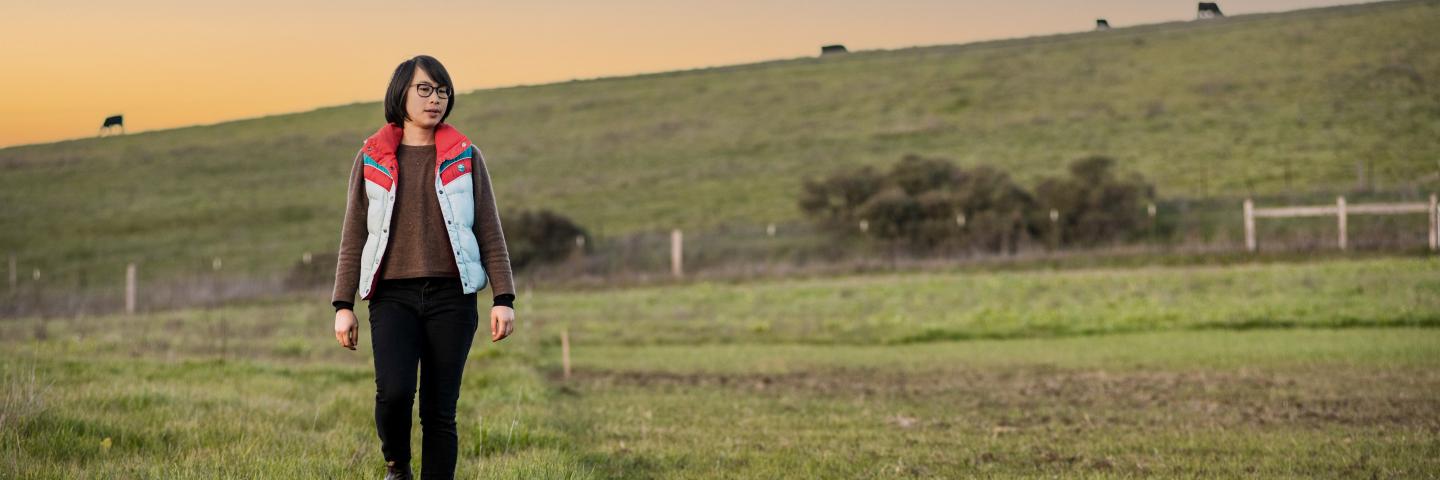USDA Seeking Applications to Expand Conservation Assistance to Underserved Producers

USDA is seeking applications for projects that will improve outreach to underserved producers and underserved communities about conservation programs and services and opportunities for students to pursue careers in agriculture, natural resources and related sciences.
The U.S. Department of Agriculture (USDA) is seeking applications for projects that will improve outreach to underserved producers and underserved communities about conservation programs and services and opportunities for students to pursue careers in agriculture, natural resources and related sciences. USDA’s Natural Resources Conservation Service (NRCS) is offering up to $70 million in cooperative agreements with entities for two-year projects that encourage participation in NRCS programs, especially in underserved communities and among urban and small-scale producers.
“USDA is committed to removing barriers for underserved producers to all USDA services, and the projects funded through this opportunity will better ensure these producers receive the benefits our conservation programs deliver,” said NRCS Chief Terry Cosby. “NRCS is investing in continued support of community-based organizations and partners that are instrumental in supporting conservation outreach to underserved producers and underserved communities.”
The Equity in Conservation Outreach Cooperative Agreements will include projects that:
- Promote the benefits of NRCS programs through education or demonstration of conservation practices
- Develop community conservation partnerships that engage underserved producers to plan and protect farmland ecosystems, watersheds, and wildlife habitat in underserved communities
- Inform small-scale or urban agriculture producers about opportunities to participate in conservation programs
- Support education on, planning for and adoption of climate smart conservation practices
Projects should reach underserved groups through a combination of program outreach and technical assistance in one or more of the following five NRCS priority areas:
- Addressing local natural resource issues
- Promoting conservation career opportunities
- Expanding adoption of climate-smart conservation
- Encouraging conservation in small-scale and urban agriculture
- Developing conservation leadership skills and opportunities
Program Impacts
The funding opportunity announced today builds on NRCS’ fiscal year 2022 investment of $50 million in more than 100 partnerships to expand access to conservation assistance for climate-smart agriculture and forestry. Work is underway in 44 states and territories.
In the first six months after last year’s outreach cooperative agreements were awarded, 85 new outreach partnerships were established, and 32 existing outreach partnerships were built upon. These partnerships include 15 tribal agreements, seven agreements with Historically Black Colleges and Universities and 1890s’ Foundation agreements, and two Hispanic Serving Institutions.
As of January 2023, more than 380 outreach events and workshops had been held with over 7,500 people attending, and more than 14,000 people had been reached by awardee outreach.
Some early success stories include:
Limestone Valley Resource Conservation District has involved over 500 students at Park Creek Elementary School in a new school garden and nature center. A group of 13 local partners, including the U.S. Fish and Wildlife Service, are helping to expand garden activities to include a habitat focus, including providing habitat for local threatened and endangered species.
The Center for Rural Affairs received 22 applications for first round of their Beginning Farmer Conservation Fellows program and curriculum for the program has been developed.
The University of Arizona has increased staff and satellite colleges in the Yuma, Arizona and Imperial Valley, California area, which serve many immigrant farming families, to provide services and information physically closer to these communities.
Who Is Eligible
Entities and individuals who provide outreach assistance to underserved groups are eligible. Eligible entities include:
- Native American tribal governments (Federally recognized)
- Native American tribal governments (State recognized)
- Native American tribal organizations
- Nonprofits having a 501(c)(3) status with the IRS (other than institutions of higher education)
- Nonprofits that do not have a 501(c)(3) status with the IRS (other than institutions of higher education)
- Nonprofit private institutions of higher education
- Public and state-controlled institutions of higher education
- Conservation districts
Underserved producers include beginning, limited resource, socially disadvantaged, and veteran farmers and ranchers, as well as other underrepresented or disadvantaged communities.
How to Apply
Applications must be received by 11:59 p.m. Eastern Time on April 27, 2023. See the grants.gov announcement for details and application instructions.
A pre-recorded webinar is available on the Equity in Conservation Outreach Cooperative Agreements - Fiscal Year 2023 page.
The NRCS Outreach and Partnerships Division will host four live webinars on this funding opportunity. Registration is not required; simply click the link(s) below at your desired time. There will be an opportunity to ask questions at the close of each session.
Tuesday, March 7, 2023, 9:00 – 11:00 a.m. Eastern
Thursday, March 9, 2023, 9:00 – 11:00 a.m. Eastern
Tuesday, March 14, 2023, 4:00 – 6:00 p.m. Eastern
Thursday, March 16, 2023, 4:00 – 6:00 p.m. Eastern
Under the Biden-Harris administration, USDA is engaged in a whole-of-government effort to combat the climate crisis and conserve and protect our nation’s lands, biodiversity and natural resources including our soil, air and water. Through conservation practices and partnerships, USDA aims to enhance economic growth and create new streams of income for farmers, ranchers, producers and private foresters. Successfully meeting these challenges will require USDA and our agencies to pursue a coordinated approach alongside USDA stakeholders, including State, local and Tribal governments.
USDA touches the lives of all Americans each day in so many positive ways. In the Biden-Harris administration, USDA is transforming America’s food system with a greater focus on more resilient local and regional food production, fairer markets for all producers, ensuring access to healthy and nutritious food in all communities, building new markets and streams of income for farmers and producers using climate smart food and forestry practices, making historic investments in infrastructure and clean energy capabilities in rural America, and committing to equity across the Department by removing systemic barriers and building a workforce more representative of America. To learn more, visit usda.gov.
# # #

